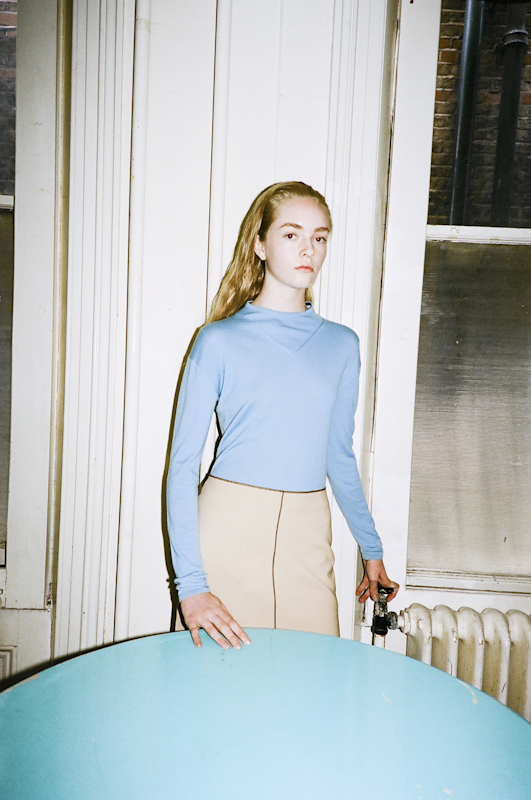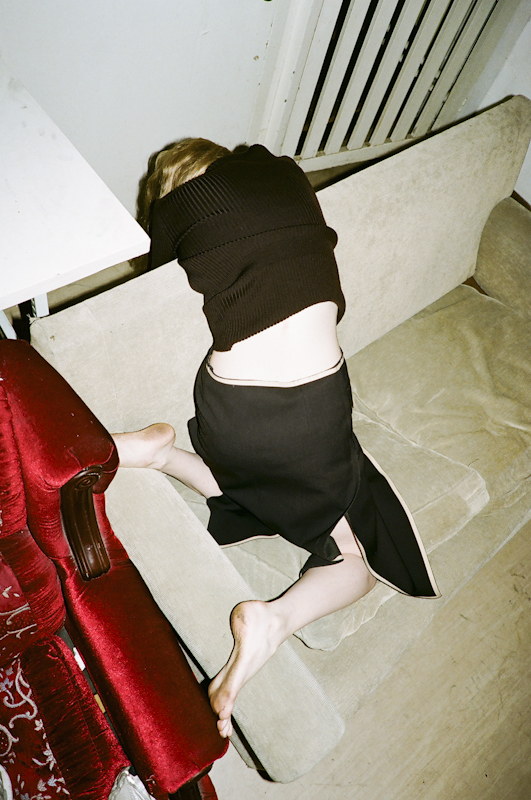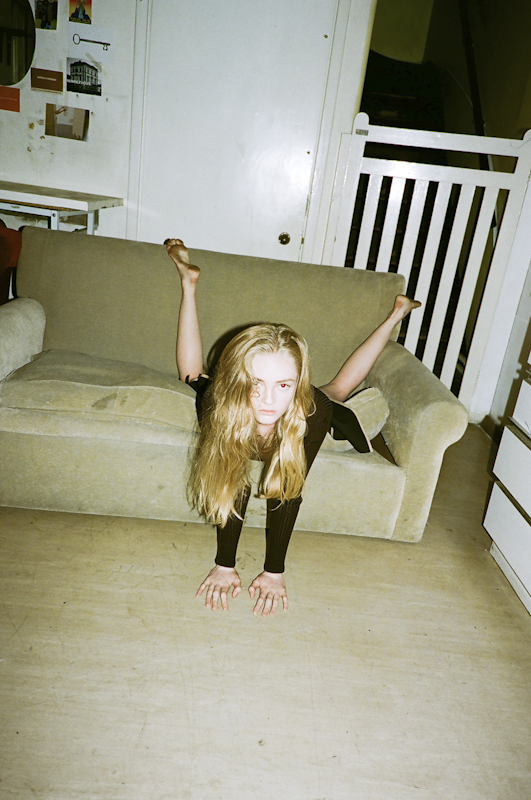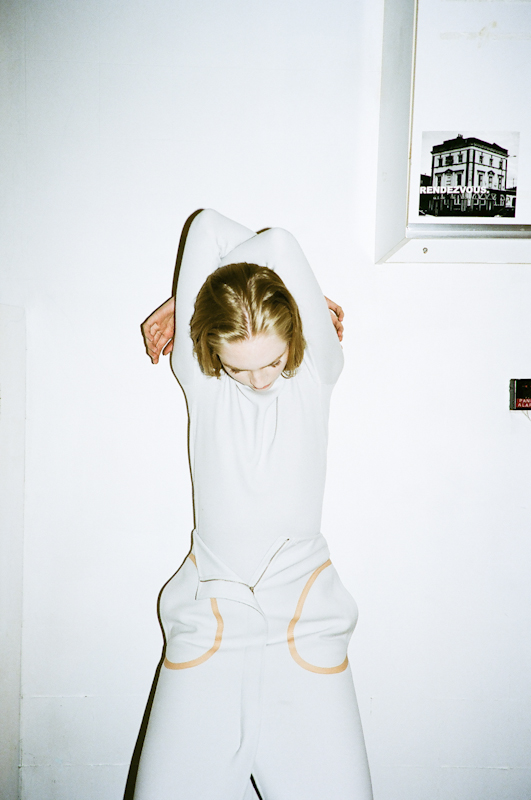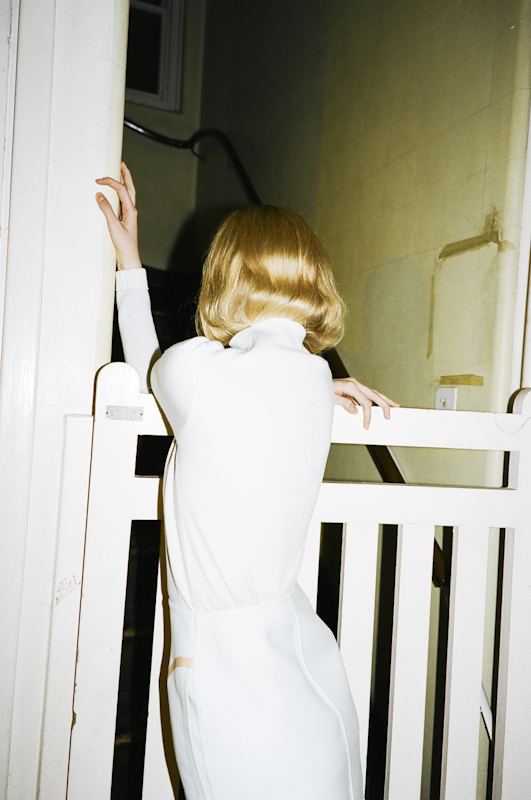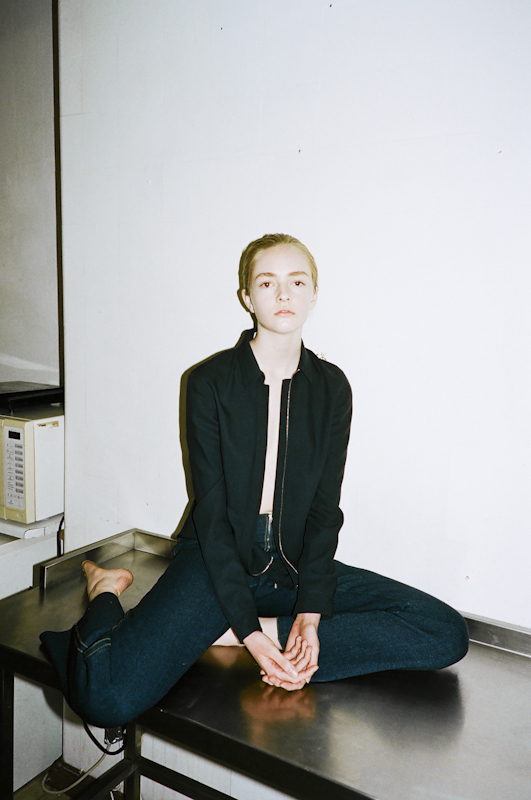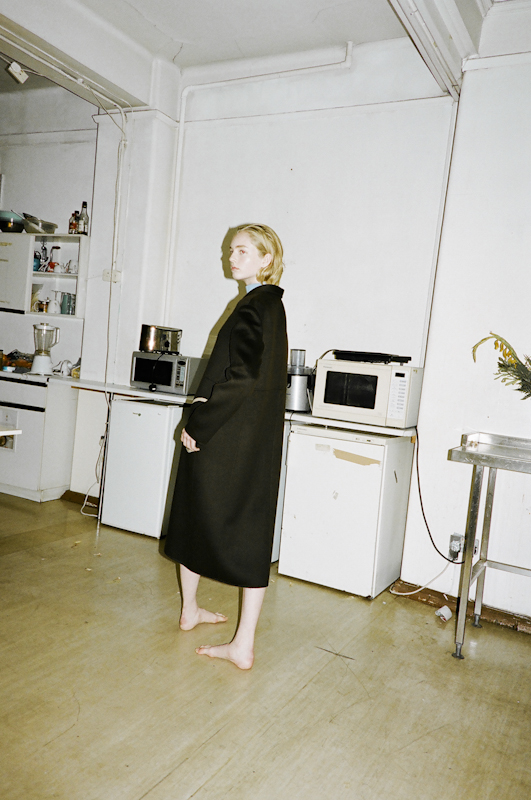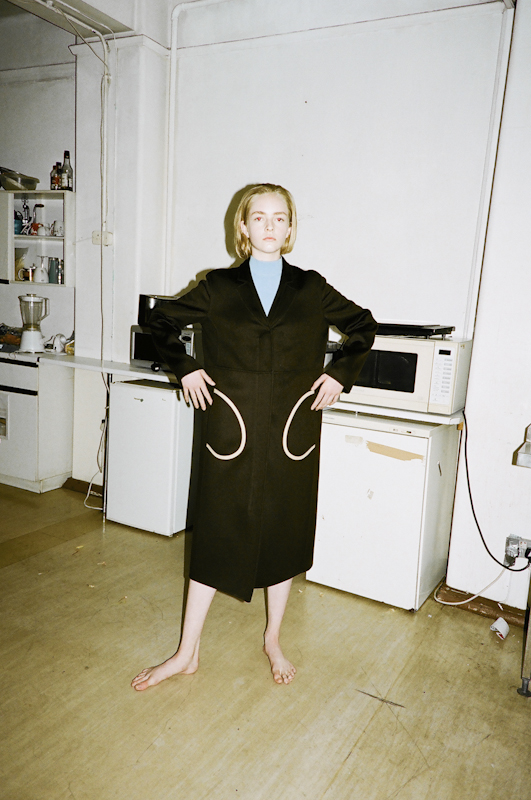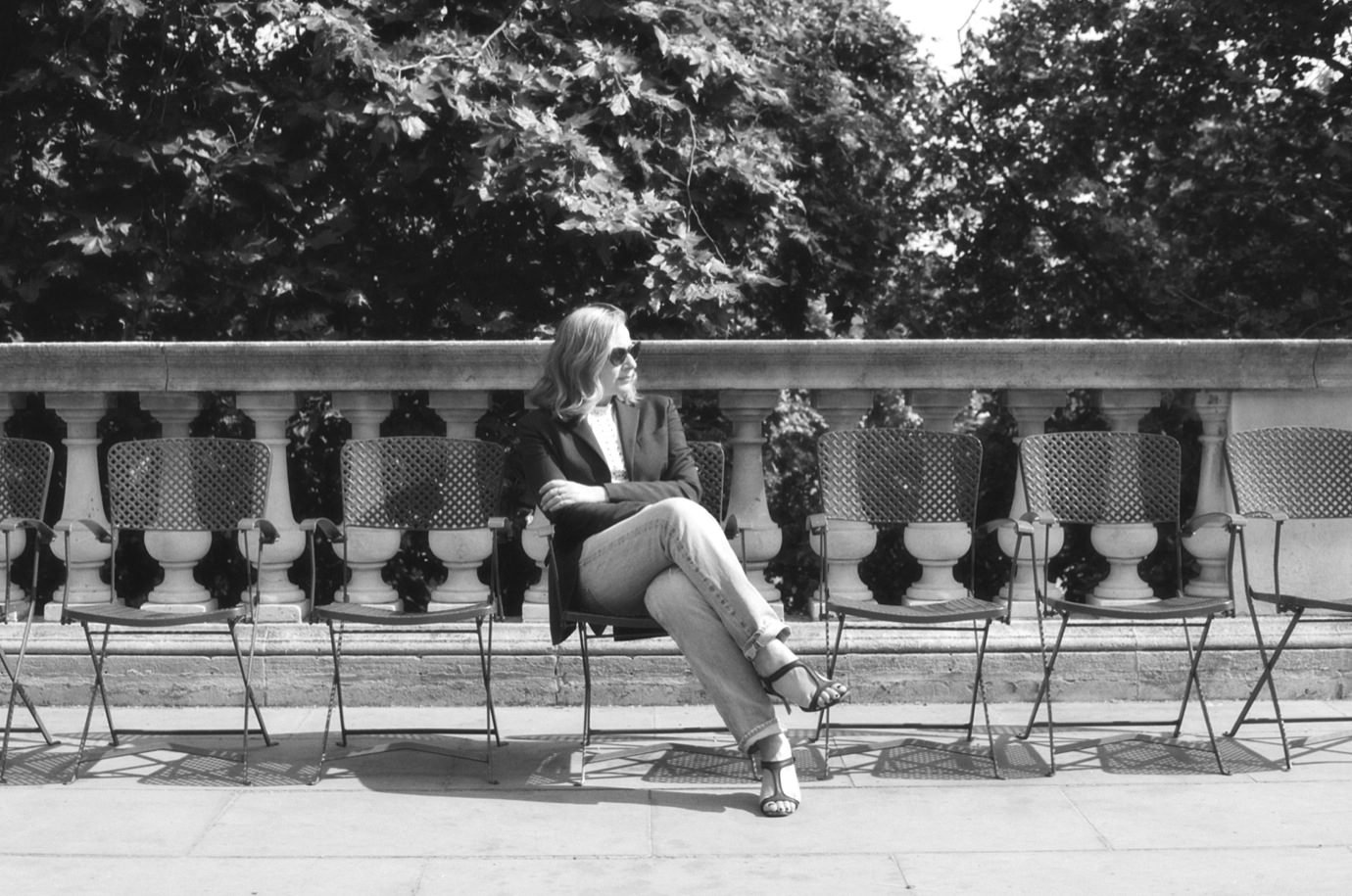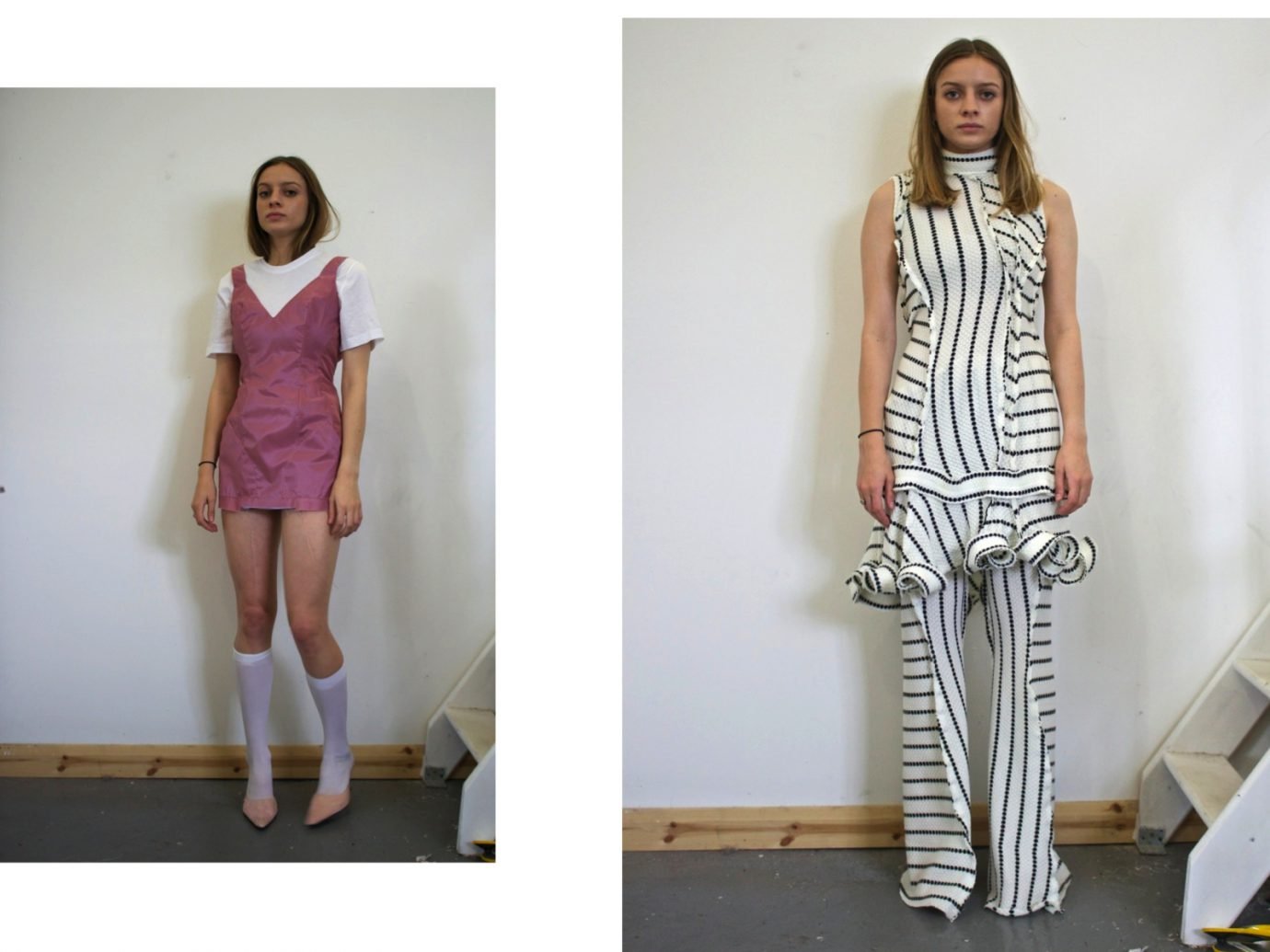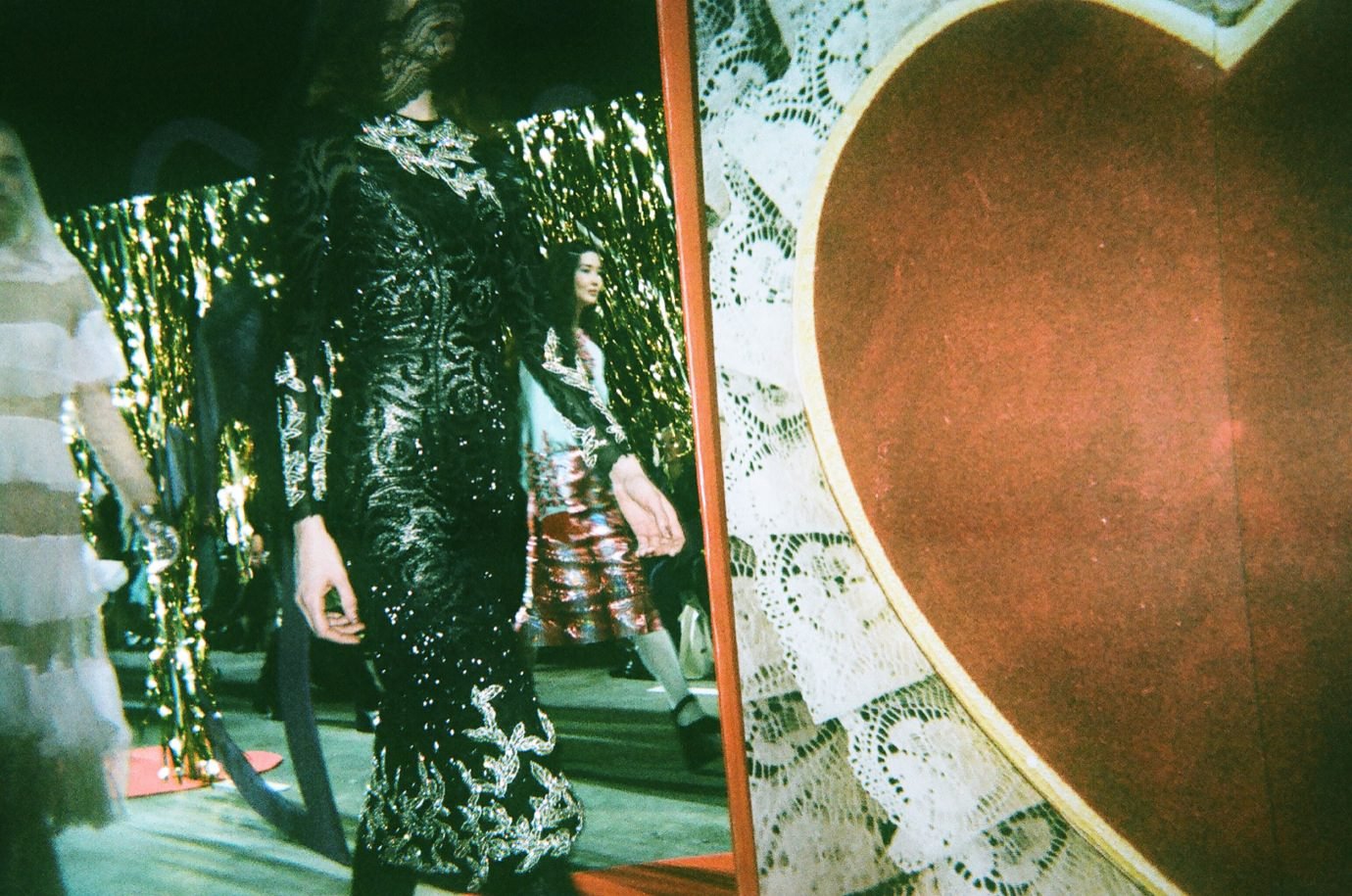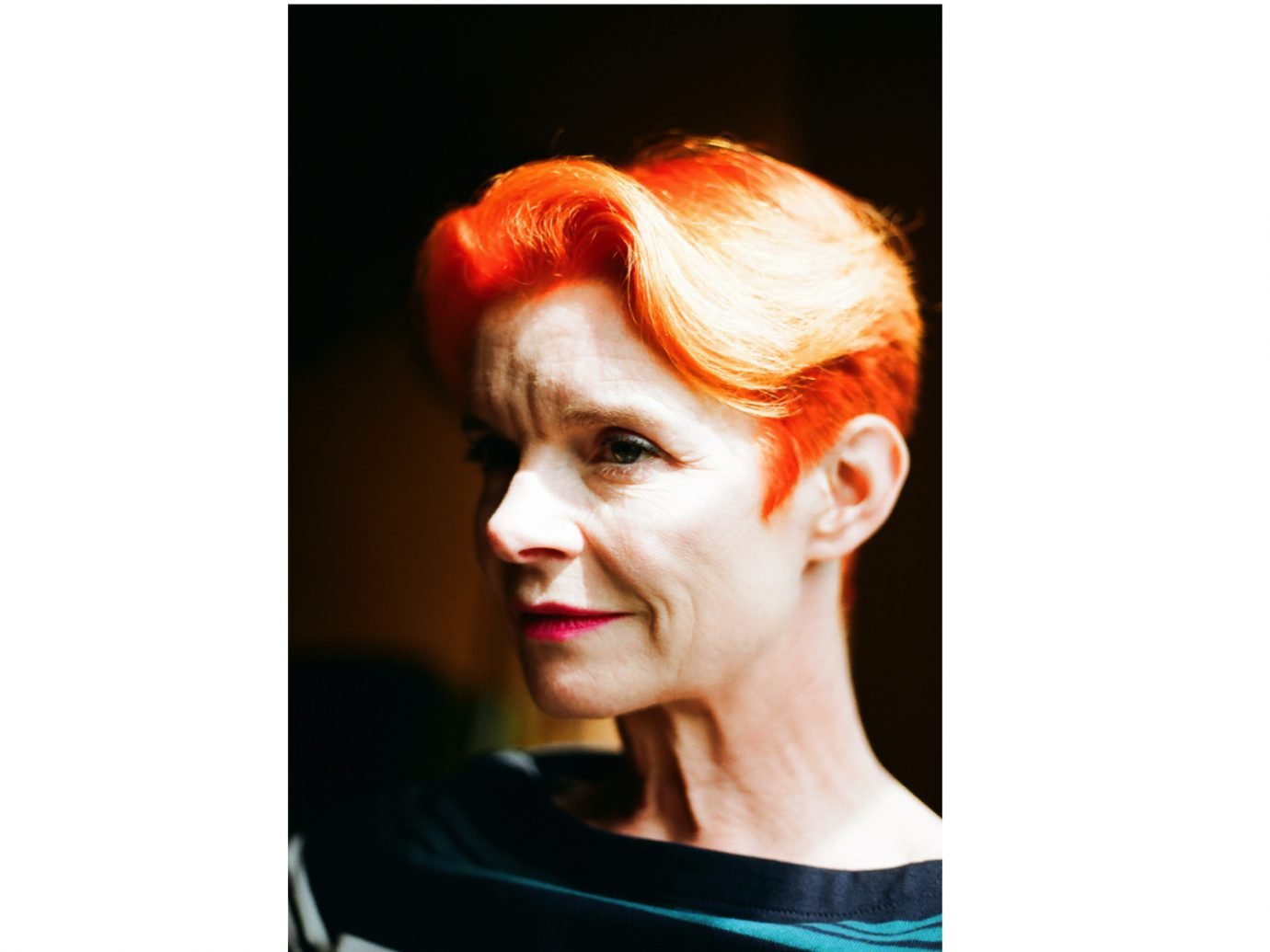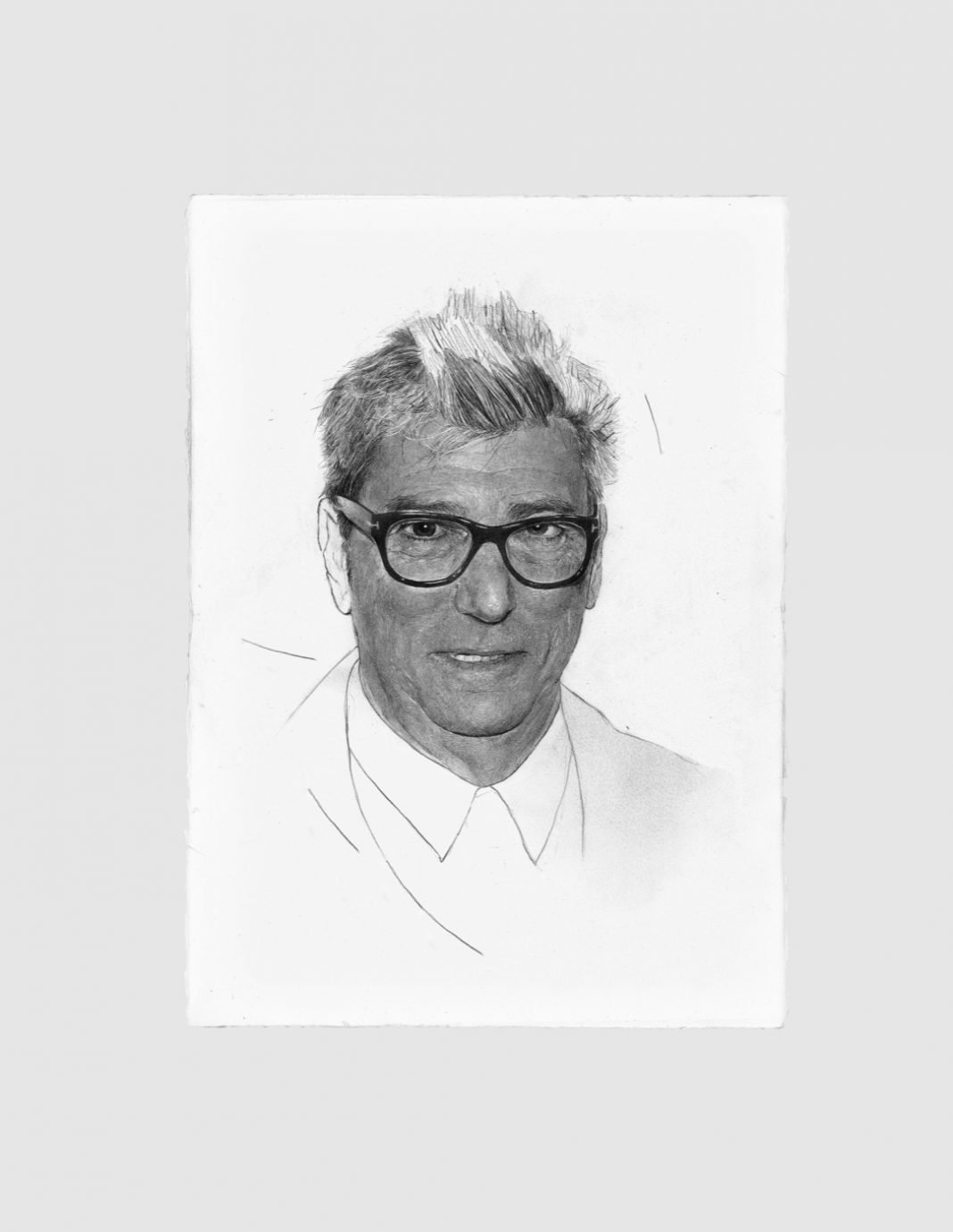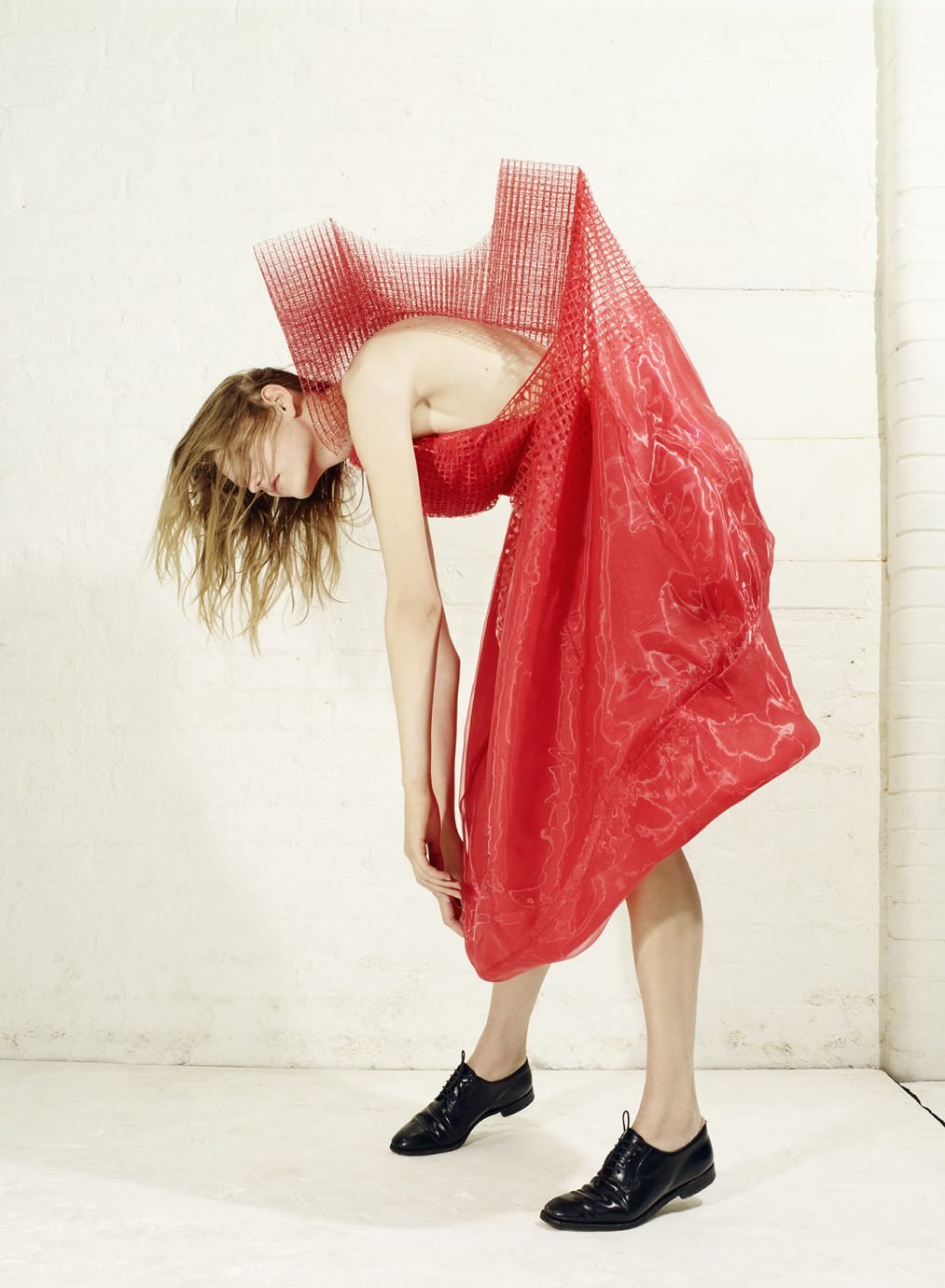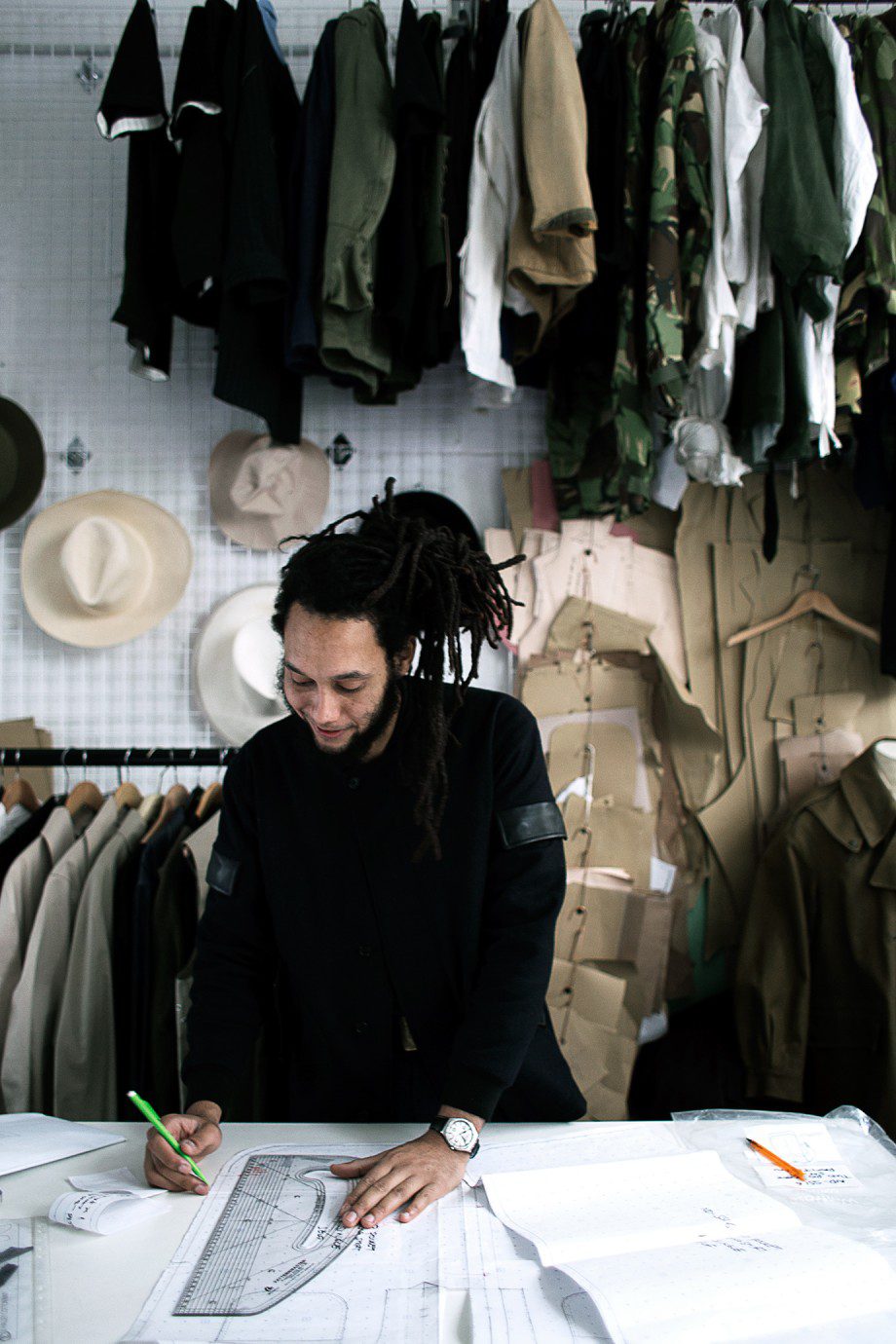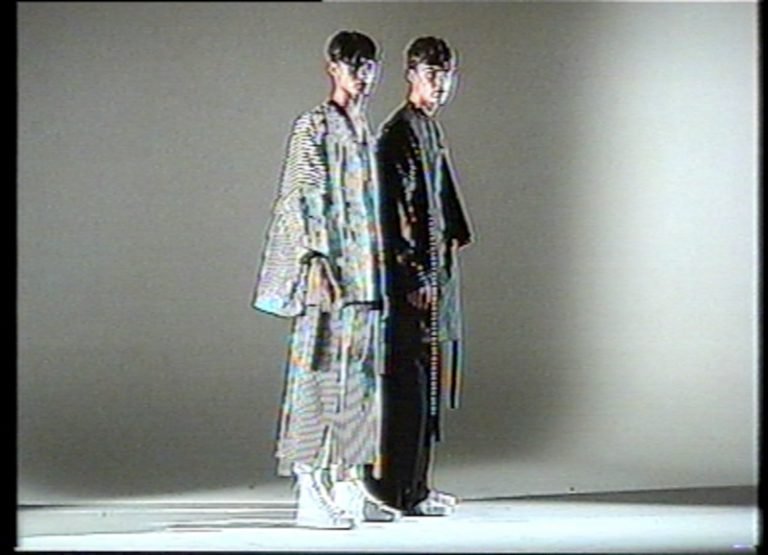Charlotte has the finesse to focus on every detail of her label, which consists of unlined separates in simple yet striking shapes, crafted from lightweight double-faced cashmere. She is aware of the competition, having worked on various brands for years, and is conscious of pricing and production – skills that come from a career spent focusing on the finer details. “I wouldn’t have been able to do it without that experience,” she admits, acknowledging that her time at CSM didn’t necessarily provide her with the skills for a sustainable career. “I would have known how to make a great dress, but I wouldn’t have known how to execute it or how to coincide with brands who are doing exactly the same thing but everyone knows about them.”
“I THINK THE WORDS ‘MINIMALISM’ AND ‘CLEAN’ HAVE BEEN OVERUSED AND NOT NECESSARILY FOR THE RIGHT THINGS, WHICH MEANS IT CAN BE MISCONSTRUED.”

